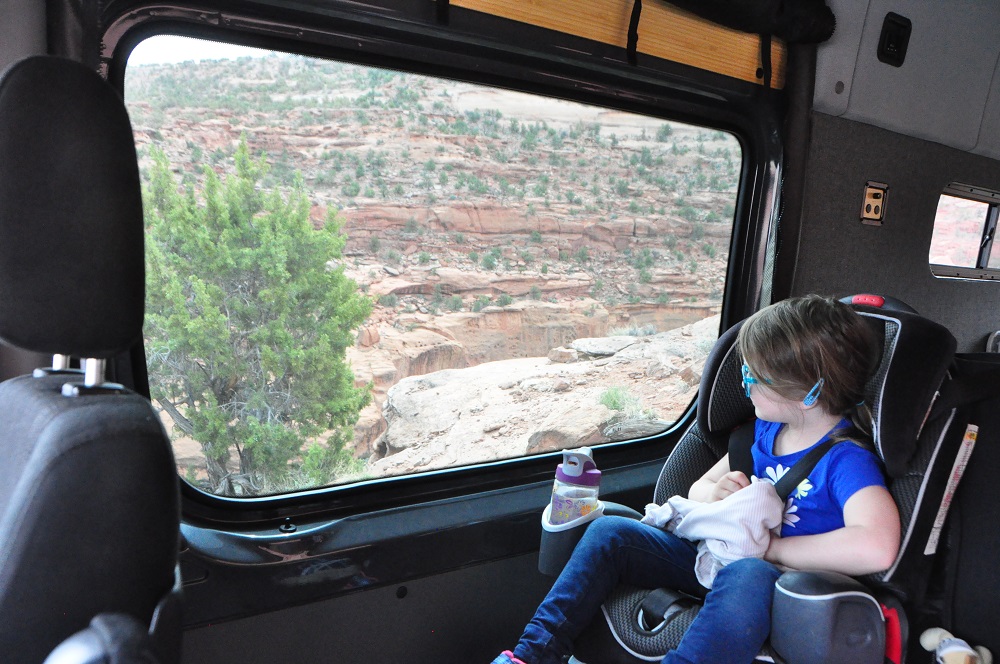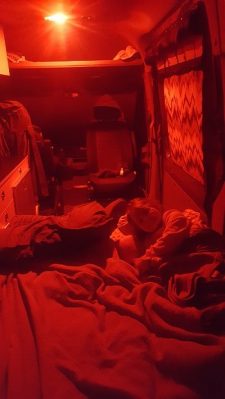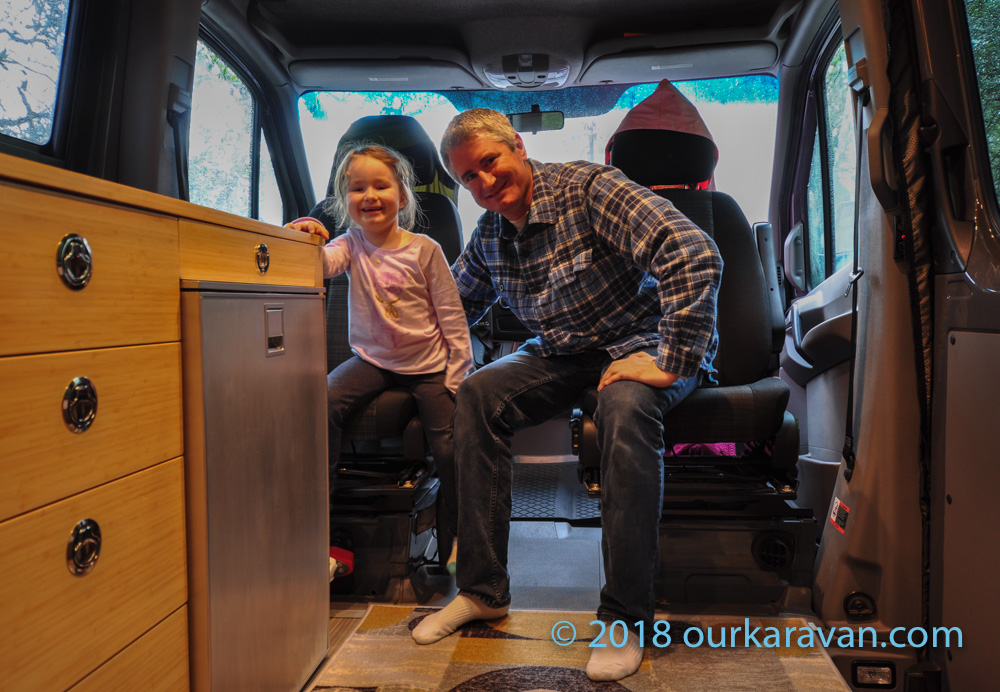Vanlife Travel With Young Children
How to do Vanlife with Young Children

Have you ever wondered what it would be like to do vanlife with kids? Are you worried about being trapped in a small space with unhappy kiddos? Of course you are, we have all been there. First thing that comes to mind when planning a trip far from home or with long driving days is the possibility (reality?) that someone will be unhappy. Everyone has different personalities, so things that work for one family may not for another. That said, we wanted to share some tips that work well for us when traveling.
Long Driving Days – Do Some Pre-Planning
On longer driving days it helps to find something along the way that kids will enjoy. For example, one of our recent trips required a 7 hour drive between Sacramento, California and our first destination of Coos Bay, Oregon. About 2-1/2 to 3 hours into the drive we planned stop at the Sundial Bridge in Redding, CA. This enabled us to have lunch, the kids were able to play at the park and we were able to take a short walk on the Sundial Bridge to stretch the legs.
Keeping everyone fed and giving the opportunity to get out and stretch every couple of hours will help everyone’s mood. Probably more than anything, when the kiddos start to get restless you can use the park as a reward for good behavior. This gives them something to look forward to as opposed to a straight 7 hour drive in the car. It helps to have these stops pre-planned so you can time your lunch, bathroom stops, etc to keep the travel as efficient as possible. The co-driver can also do this enroute, assuming you have cel service.
Vanlife with Kids – Keep it in Fun in the Car
Giving your child access to their favorite toys while traveling is a pretty obvious choice. For our daughter, her favorite blanket and stuffed animals are always close-by. A magnetic drawing board helps pass the time really well. You might consider fashioning some type of work surface to the childseat with a curb around the edge so they can draw or play with toys without constantly dropping them on the floor. While we haven’t tried this yet, kid’s audio books are apparently another great way to pass the time on long drives.

Plan Activities that are Fun for Everyone
Most of our trips are not planned entirely around our child. Longer hikes and mountain biking nothwithstanding, the activities we enjoy are ones that kids tend to like anyway. On our trip last summer to Yellowstone, we did a float trip (rafting) down a river, we visited museums, rode rollercoasters (at Snow King Mountain), went to ranger presentations geared towards kids, campfire activities, took a boat tour, etc…all stuff that was fun for any age group. Enjoy breweries? It seems like many of them are reasonably kid-friendly and generally a coloring book is enough to get us an hour or so of brewery-goodness. We work on adapting our child to our life as much as we have had to adapt to theirs.
Some days are just less exciting for kids. Walking around and exploring a new city certainly falls into that category. A quick stop for ice cream or popping into a bookstore with a children’s section can add interest. Check and see if a local bike shop offers bike trailer rental (for those too young to ride on their own) or the tandems/4-seater bikes. Bikes are a fun way to see a new city when it’s safe to do-so.
–>National Park Junior Ranger Program
When traveling in National Parks, inquire about their “Junior Ranger Program.” During your park visit you and your child complete a series of activities and share your completed packet with a park ranger. A park ranger will sit down and explain some interesting details about conservation and the parks program and then honor your child with an official Junior Ranger patch and certificate. Junior Rangers are typically between the ages of 5 to 13, although people of all ages can participate. Most National Parks, but not all, offer the program. It’s a great way to introduce your child to the concept of “Explore, Learn and Protect.”
Hiking – Challenges with the sub-2 year olds
When our child was very young, she mostly rode around on my back in a kid carrier. We found the most difficult age to be 18-24 months. At this age kids are often not able to walk very far but are often getting heavy to carry in a pack. Due to an injury, I found that I was only able to hike 1-1/2 to 2 miles with my daughter on my back. At age 2, she was beginning to tolerate hikes of approximately 1 mile long. By this point we stopped using the pack and began slowly building up her hiking ability.
Each child will be different, but ours has hiked roughly a mile for each year of age. In other words, hiking about 2 miles at age 2 and she just completed her longest hike of 5.2 miles at age 4-1/2. We found that once she was able to hike around 2.5 miles, it really opened up our hiking opportunities.
Hiking – Keeping Kids Motivated
On this subject, hiking does not always come naturally to kids. We took a trip to REI and let my daughter pick out her own backpack and water bottle. This is really where the excitement began. Once she had those, she expressed a lot of enthusiasm for putting snacks in her pack and preparing for a hike. When their motivation dips, it helps to keep the conversation going about their favorite subjects or making a task out of finding the perfect hiking stick. The reward of a favorite snack never hurts to get to the next waypoint. Giving your child an old cel phone or digital camera for taking pictures along the way seems to add interest as well.
Sleeping in the Van/RV
Sleeping in a new place can be difficult for some young children. We had read the recommendation to incorporate items from home to help ease that transition. For our daughter, she used to use her light-up turtle as a night-light. When on, it the battery-powered turtle projects stars onto the ceiling. Bringing that in the van for the first few trips helped maintain some connection between sleeping at home and in the van. Without a doubt, their favorite blankets and stuffed animals should be along for the trip as well.
Night Lighting
When we built our van, we integrated a red LED into one of our factory overhead lights. Red lights are used on airplanes and boats to preserve night vision. Evidence shows red light will induce melatonin production, which is a hormone that induces sleep.
When we want to stay up around the campfire with our friends, we turn on the red light and give our daughter a FRS 2-way radio. It may sound odd, but if she were to wake up and feel unsafe, she can see (thanks to the red light) and can reach us out at the campfire with the radio. Be sure to get radios with subchannels to significantly reduce the chance you get someone talking on the same channel. We haven’t had this happen yet. We use these as they are easy to charge via USB in the van.

Other Ideas to make Camping/Vanlife fun for Kids
-A fun camp chair
-Solar powered flashlight
-Headlamp
-Let them choose a special water bottle for hiking
-Kid’s trekking poles (or do the find-a-stick-hack we already discussed)
-Sand bucket/rake for beach visits
-Glow sticks are always a fun treat at night
A Successful Trip
With any luck a combination of these tips will help increase the success of your trip. Seeing the world through the eyes of your child while traveling is hugely rewarding. As parents we have had to adapt significantly to their lives and the more you make pleasant experiences for them they will begin to adapt to yours. Take a look at our travel blog to see our recent trips. If you would like to share any tips you have found helpful in traveling with children, please post them in the comments below. Wishing you and your family happy and safe travels.

